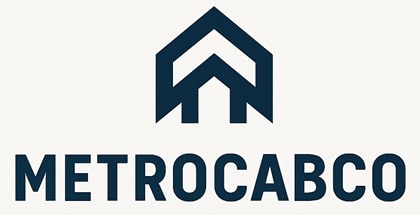Creating high-quality content just once can markedly enhance visibility across various AI tools and platforms. By understanding AI algorithms, content creators can craft materials that resonate with user preferences and search engine criteria. This involves optimizing keywords, leveraging metadata, and incorporating compelling visuals to drive engagement. Establishing a strong social media presence can further amplify reach. Exploring effective strategies will lead to more impactful content sharing across diverse digital landscapes. Insights await for those who seek further guidance.
Key Takeaways
- Develop high-quality, authentic content that meets audience needs to enhance visibility across AI platforms and improve SEO effectiveness.
- Utilize strategic keywords and optimized metadata to ensure your content ranks well in search results and is easily discoverable by AI algorithms.
- Repurpose content into various formats, such as videos or infographics, to maximize reach and engage diverse audience segments across multiple platforms.
- Implement structured data and schema markup to provide search engines with context, improving your content’s relevance and discoverability.
- Maintain a consistent social media presence to promote content and engage followers, leveraging analytics to refine strategies and enhance visibility across AI tools.
Understanding AI Algorithms and Their Impact on Content Discovery
How do AI algorithms shape the way content is discovered in today’s digital environment? These algorithms analyze user behavior, preferences, and trends to curate personalized content recommendations.
By processing vast amounts of data, they identify patterns that inform which content appears in search results and social media feeds. Machine learning models continuously refine their recommendations based on user interactions, ensuring that content aligns with evolving interests.
Also Read
AI algorithms analyze extensive data to uncover patterns, shaping content visibility in search results and social media feeds.
This dynamic approach to content discovery enhances visibility for creators who understand and leverage algorithmic preferences. Consequently, creators must adapt their strategies to optimize for these algorithms, ensuring their content reaches target audiences effectively.
Ultimately, AI algorithms serve as gatekeepers in the digital domain, influencing what users see and engage with on various platforms.
The Importance of Quality Content in the AI Era
In the AI era, the significance of quality content cannot be overstated.
Authenticity plays an essential role in distinguishing valuable material, while the synergy between SEO and AI enhances content visibility.
Engaging audiences effectively requires a strategic focus on these elements to succeed in a competitive digital landscape.
Content Authenticity Matters
As the digital landscape evolves, the significance of content authenticity becomes increasingly essential in the AI era.
With the proliferation of automated content generation tools, distinguishing original, high-quality material from generic, machine-produced text is crucial. Authentic content fosters trust and credibility among audiences, enabling brands to connect more deeply with their consumers.
Furthermore, as search algorithms become more sophisticated, they prioritize genuine, valuable content over recycled information. This shift underscores the need for creators to invest in quality and originality, ensuring their work stands out in an overcrowded marketplace.
In an environment where misinformation can spread rapidly, maintaining authenticity not only enhances a brand’s reputation but also contributes to the overall integrity of digital communication.
SEO and AI Synergy
The interplay between SEO and AI highlights the growing importance of quality content in today’s digital landscape.
As search engines increasingly incorporate AI algorithms, they prioritize content that is not only relevant but also provides genuine value to users. Quality content enhances user engagement, reduces bounce rates, and fosters backlinks, all of which are critical for effective SEO.
In an era where AI can generate vast amounts of content, standing out requires authenticity and depth. Businesses must focus on crafting well-researched, insightful articles that address specific audience needs.
This commitment to quality guarantees that content remains discoverable across various AI tools, ultimately driving traffic and improving visibility in a saturated online environment. Quality content becomes the cornerstone of successful SEO strategies.
Engaging Audiences Effectively
While many businesses may rely on AI-generated content to capture attention, engaging audiences effectively hinges on the delivery of genuine, high-quality material. In an era dominated by artificial intelligence, the importance of authenticity becomes paramount.
Consumers increasingly seek connections with brands that resonate with their values and interests. Quality content not only informs but also fosters trust, encouraging deeper interactions.
Businesses that invest in well-researched, thoughtfully crafted narratives are more likely to stand out in a crowded digital landscape. Furthermore, strong content enhances brand loyalty and drives word-of-mouth referrals.
As AI tools evolve, the challenge lies in ensuring that human creativity and insight remain at the forefront, creating compelling experiences that captivate and retain audiences.
Strategies for Optimizing Content for Multiple Platforms
Maximizing content visibility across various platforms requires a strategic approach that tailors messaging to each audience.
Brands must consider the unique characteristics of each platform, ensuring that content resonates with users. This involves adapting formats, tones, and visual elements to suit different channels, enhancing engagement and reach.
Key strategies include:
- Understanding Audience Preferences: Research demographic insights for each platform to tailor content effectively.
- Utilizing Multi-Format Content: Create diverse formats—videos, infographics, and articles—to appeal to varying audience preferences.
- Cross-Promotion: Leverage each platform’s strengths by promoting content across channels, driving traffic and increasing visibility.
Utilizing Keywords and Metadata Effectively
Effective utilization of keywords and metadata is essential for maximizing visibility in various AI tools.
By understanding the importance of strategically chosen keywords and crafting precise metadata, content creators can greatly enhance their discoverability.
This section will explore how to optimize these elements to guarantee content reaches the intended audience.
Importance of Keywords
The strategic use of keywords and metadata is essential for enhancing online visibility and guaranteeing that content reaches its intended audience. Keywords serve as the bridge between user intent and content, making them critical for search engine optimization (SEO).
By focusing on relevant keywords, creators can better align their content with what users are searching for, ultimately driving more traffic.
- Increased Search Rankings: Properly integrated keywords can improve a site’s position on search engine results pages.
- Targeted Audience Engagement: Using specific keywords helps attract the right audience, increasing the likelihood of conversion.
- Content Relevance: Keywords guarantee that content remains relevant and valuable, addressing users’ needs effectively.
Incorporating keywords thoughtfully is essential for maximizing online presence.
Crafting Effective Metadata
Crafting compelling metadata is essential for ensuring that content stands out in an increasingly crowded digital landscape. Effective metadata serves as a bridge between content and users, guiding search engines and AI tools in accurately categorizing and presenting information.
Key components include titles, descriptions, and tags that incorporate relevant keywords, enhancing discoverability. A well-structured title should be concise yet descriptive, while the description must succinctly summarize the content’s essence, enticing users to engage.
Tags, when chosen wisely, can enhance the content’s reach within niche topics. Consistent and strategic use of metadata not only improves visibility but also aligns with user intent, ultimately driving higher traffic and engagement across various platforms.
Optimizing for AI Tools
Harnessing the power of keywords and metadata is crucial for maximizing visibility in AI tools. By strategically incorporating relevant keywords, content creators can greatly enhance the discoverability of their work.
Furthermore, effective metadata not only aids in indexing but also guarantees that the content resonates with the target audience.
To optimize for AI tools, consider the following:
- Research Keywords: Identify high-traffic keywords that align with your content theme.
- Utilize Structured Data: Implement schema markup to provide context and improve search results.
- Regularly Update Metadata: Refresh titles and descriptions to reflect current trends and maintain relevance.
These practices will help ensure that content remains accessible and appealing across various AI platforms.
The Role of Visuals in Enhancing Content Visibility
Visual elements play an important role in improving content visibility across various platforms. They capture attention, making content more engaging and memorable.
In a world inundated with information, images, infographics, and videos stand out, increasing the likelihood of sharing and interaction. These visuals not only enhance understanding but also aid in retention, as people often remember visual information better than text alone.
Additionally, incorporating visually appealing elements can improve SEO, as search engines prioritize multimedia content. When designed effectively, visuals can drive traffic and elevate brand recognition, creating a cohesive experience that resonates with audiences.
In this way, leveraging visuals strategically is vital for maximizing content reach and ensuring it is found by target audiences in an increasingly competitive digital landscape.
Repurposing Content for Diverse Audience Engagement
Effective content strategy extends beyond the creation of engaging visuals; it also encompasses the ability to repurpose that content for diverse audience engagement.
By adapting existing content into various formats, brands can reach different demographics while maximizing their resources. This approach not only enhances visibility but also fosters a deeper connection with the audience.
- Transform blog posts into infographics for quick visual consumption.
- Convert video content into audio snippets or podcasts for on-the-go listening.
- Create social media posts that highlight key insights from longer articles.
Building a Strong Social Media Presence
While many brands recognize the importance of a social media presence, few understand the strategies required to build one that truly resonates with their audience.
A strong social media presence hinges on authenticity, where brands must communicate genuinely and engage with their followers. Consistency in posting is essential, as it keeps the audience informed and interested.
Additionally, leveraging various content forms—such as videos, infographics, and live sessions—can enhance engagement and broaden reach. Understanding the target demographic allows brands to tailor their messaging effectively.
Collaborations with influencers can also amplify visibility and credibility. Ultimately, fostering a community around the brand encourages loyalty and encourages user-generated content, further solidifying the brand’s position in the social media landscape.
Analyzing Performance Metrics Across AI Tools
Analyzing performance metrics across various AI tools is essential for understanding their effectiveness.
By focusing on key performance indicators, users can gain insights into how different platforms compare.
This comparative analysis aids in optimizing content strategies and improving overall visibility.
Key Performance Indicators
Key performance indicators (KPIs) serve as essential benchmarks for evaluating the effectiveness of AI tools in diverse applications.
By establishing clear metrics, organizations can gain insights into the performance and impact of their AI strategies. Effective KPIs enable stakeholders to make informed decisions about tool optimization and resource allocation.
- Accuracy Rate: Measures how precisely the AI tool performs its tasks, indicating reliability.
- User Engagement: Assesses how often and effectively users interact with the AI tool, reflecting its usability.
- Response Time: Evaluates the speed at which the tool processes input and delivers output, vital for user satisfaction.
Cross-Tool Comparisons
Evaluating the performance of AI tools involves not only understanding their individual KPIs but also comparing these metrics across different platforms.
Cross-tool comparisons provide insights into which tools deliver superior results in specific areas, such as processing speed, accuracy, or user engagement. By analyzing performance metrics, users can identify strengths and weaknesses, enabling more informed decisions when selecting the right tool for a particular task.
Additionally, such comparisons can reveal trends and patterns that may influence future tool development and feature enhancements.
Ultimately, thorough analysis empowers businesses to optimize their AI tool usage, ensuring maximum effectiveness in achieving organizational goals while adapting to the ever-evolving landscape of artificial intelligence technology.
Collaborating With Influencers and Other Creators
Harnessing the power of collaboration with influencers and other creators can greatly amplify a brand’s reach and visibility in today’s digital landscape.
By leveraging the established audiences of influencers, brands can enhance their credibility and tap into niche markets. Collaborations can also foster creativity, resulting in innovative content that resonates with diverse audiences.
Leveraging influencers’ audiences enhances brand credibility and unlocks niche markets through creative collaborations.
- Increased Engagement: Influencers often have dedicated followers who trust their recommendations.
- Cost-Effective Marketing: Partnerships can provide exposure without the need for extensive advertising budgets.
- Content Diversification: Collaborating with diverse creators can lead to unique and varied content formats, appealing to broader demographics.
Staying Updated on AI Trends and Algorithm Changes
Staying informed about AI trends and algorithm changes is crucial for brands seeking to maintain a competitive edge in the digital marketplace. The rapid evolution of AI technologies and the algorithms that govern them can greatly impact visibility and engagement.
Companies must regularly monitor industry news, reports, and expert analyses to understand emerging trends and shifts. Engaging with AI-focused communities and attending conferences can also provide valuable insights.
Additionally, businesses should leverage analytics tools to track performance metrics and adapt strategies accordingly. By proactively updating their approaches in response to these changes, brands can enhance their online presence and guarantee they remain relevant in an increasingly crowded digital landscape.
Continuous learning and adaptation are essential for long-term success in AI-driven environments.
FAQ
How Can I Measure the Impact of AI on My Content Visibility?
To measure AI’s impact on content visibility, one can analyze metrics like search rankings, engagement rates, and traffic sources. Utilizing analytics tools helps assess shifts in performance attributed to AI optimization strategies over time.
What Are the Best Tools for Analyzing Ai-Driven Content Performance?
In the vast ocean of digital content, tools like Google Analytics, SEMrush, and BuzzSumo serve as compasses. They guide content creators through the currents of AI-driven performance, revealing insights to navigate visibility challenges effectively.
Can I Automate Content Distribution Across Multiple AI Platforms?
The automation of content distribution across multiple AI platforms is indeed possible. Various tools and software solutions enable users to streamline this process, ensuring efficient sharing and maximizing reach across diverse digital channels simultaneously.
How Often Should I Update My Content for AI Optimization?
The frequency of content updates for AI optimization depends on industry dynamics and audience engagement. Regularly updating content, ideally every few months, guarantees relevance and enhances visibility across platforms, improving overall performance and searchability.
What Common Mistakes Do Creators Make With AI Content Strategies?
Creators often underestimate the importance of audience research, neglect optimization for search engines, and fail to adapt content for various platforms. Additionally, they may over-rely on AI, sacrificing authenticity and personal touch in their strategies.
Conclusion
In today’s fast-paced digital landscape, mastering the art of content creation and optimization is akin to wielding a magic wand that can make your work visible across countless AI tools. By understanding algorithms, leveraging quality content, and employing strategic techniques, creators can guarantee their voices resonate loudly. As AI technology evolves, staying informed and adaptable will be paramount to thriving in this competitive arena, making the difference between being overlooked and achieving monumental success.













